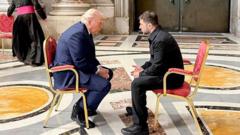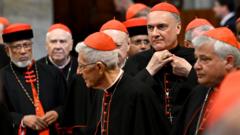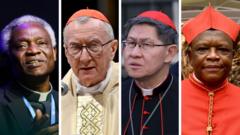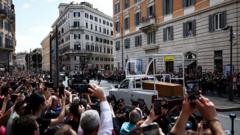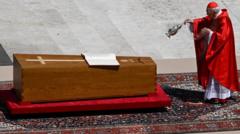As the Catholic community mourns the passing of Pope Francis, attention turns to the intricate process that will select his successor. The transition, steeped in age-old customs and Latin terminology, can seem daunting to outsiders and insiders alike. With the unique challenges it presents, a conclave of cardinals is set to gather to determine the next pope, a procedure not witnessed in over ten years.
Pope Francis’s Passing: Understanding the Papal Transition Process

Pope Francis’s Passing: Understanding the Papal Transition Process
The funeral of Pope Francis marks the beginning of a historic transition in the Catholic Church, shrouded in centuries-old traditions and terminology.
The upcoming conclave, scheduled for May 7, embodies the ceremony's traditional secrecy. "Conclave" translates from Latin to "with key," representing the isolation from the outside world that the cardinals must endure as they seek harmony on who will lead over a billion Catholics worldwide. This elected body, known as the College of Cardinals, comprises 252 members appointed by the previous pope and oversees this critical decision-making. Leading this assembly is Giovanni Battista Re, the 91-year-old dean of the cardinals, who presides over pre-conclave meetings but cannot vote, as only those under 80 are eligible. As the world closely watches the proceedings unfold, the insights into the papal election process will shape the conversation around the future of the Church for years to come.

